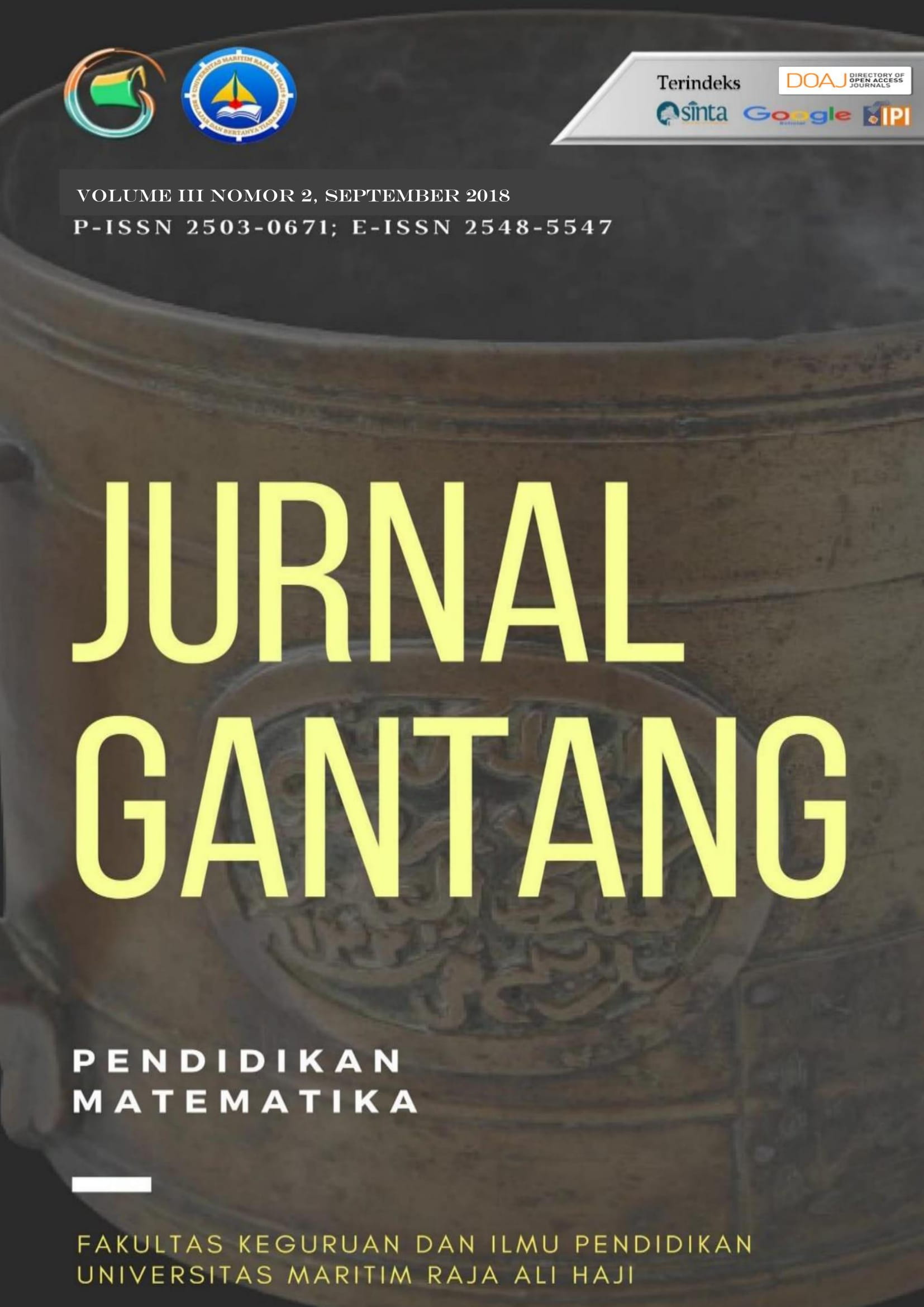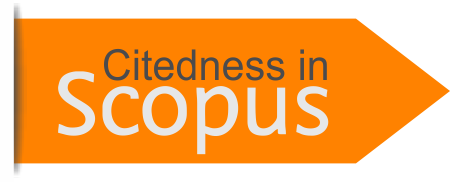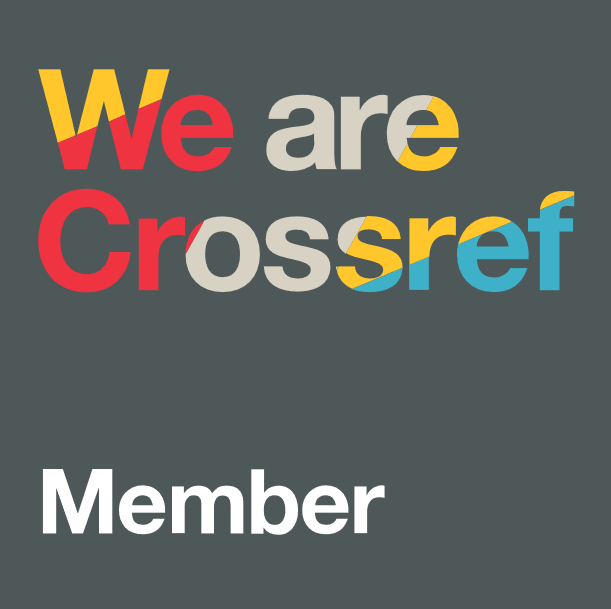Kemampuan Konservasi Panjang Pada Siswa Usia 6-7
DOI:
https://doi.org/10.31629/jg.v3i2.480Keywords:
konservasi panjang, siswa usia 6-7 tahun, deskriptif kualitatifAbstract
Penelitian ini bertujuan untuk mendeskripsikan kemampuan konservasi panjang pada siswa yang memiliki usia 6-7 tahun di Kabupaten Manggarai. Penelitian ini merupakan penelitian deskriptif kualitatif dengan sampel yang diambil secara acak sejumlah 80 anak. Siswa yang berusia 6 tahun berjumlah 40 anak, begitu juga dengan siswa yang berumur 7 tahun, yang diambil dari SD di Kabupaten Manggarai. Instrumen yang digunakan dalam penelitian ini berupa angket konservasi panjang yang berisi pernyataan-pernyataan mengenai berbagai kondisi yang menjelaskan konsep konservasi panjang. Setiap anak diberi tes kemampuan konservasi panjang kemudian dilanjutkan dengan wawancara mengenai alasan memberi jawaban pada tes konservasi tersebut. Hasil penelitian menunjukkan bahwa golongan konserver pada siswa yang berusia 6 tahun sebesar 0% dan 7 tahun sebesar 7,5%. Selanjutnya, golongan konserver parsial pada siswa yang berusia 6 tahun sebesar 7,5% dan 7 tahun sebesar 22,5%. Selain itu, untuk golongan non-konserver pada siswa yang berusia 6 tahun sebesar 92,5% dan 7 tahun sebesar 70%. Hasil ini menunjukkan kemampuan konservasi panjang pada siswa yang memiliki usia 6-7 tahun di Kabupaten Manggarai masih rendah dan sebagian besar belum memahami konsep konservasi panjang.
Kata kunci: konservasi panjang; siswa usia 6-7 tahun; deskriptif kualitatif
The purpose of this study was to describe the ability of Manggaraian children of age six to seven in length conservation area. This research is a qualitative descriptive study. The random sampling technique was used to select 80 children, consisted of 40 children per age. The instrument of this research was a length conservation questionnaire containing statements about conditions that explain the concept of length conservation. Each child was given a length conservation skill test followed by an interview about the reasons for providing answers to the conservation test. The results showed that none of six-year-old children was conserver, only 7.5% were partial conserver, and 92.5% were non-conserver. For seven-year-old children, 7.5% were conserver, 22.5% were partial, and 70% were non-conserver. These results indicate the lengthy-term conservation ability of children age six to seven in Manggarai Regency is still low and most have not understood the concept of length conservation.
Keywords: length conservation; student of age 6 to7; qualitative descriptive
Downloads
References
Arumsari, L. E., Andreswari, D., & Saparahayuningsih, S. (2014). Media permainan matematika menggunakan aplikasi java dekstop sebagai alat bantu pengajaran hukum kekekalan bilangan dan luas. Jurnal Teknologi Informasi, 10(2), 157–167.
Ashley-Smith, J. (2016). Losing the edge: the risk of a decline in practical conservation skills. Journal of the Institute of Conservation, 39(2), 119–132. https://doi.org/10.1080/19455224.2016.1210015
Bobis, J. et al. (2010). Playing with mathematics: play in early childhood as a context for mathematical learning. In Shaping the future of mathematics education: Proceedings of the 33rd annual conference of the Mathematics Education Research Group of Australasia (pp. 714–730). Retrieved from https://www.researchgate.net/profile/Janette_Bobis/publication/267414818_
Playing_with_Mathematics_Play_in_Early_Childhood_as_a
_Context_for_Mathematical_Learning/links/5451270a0cf285a067c68480.pdf
Bradford, C. T., & Kroeker, S. D. L. (2016). Educational psychology in Yukon. Canadian Journal of School Psychology, 31(3), 271–274. https://doi.org/10.1177/0829573516655230
Crowley, B. M. (2015). The effects of problem-based learning on mathematics achievement of elementary students across time.
Funny, R. A. (2014). Students’ initial understanding of the concept of conservation of area. Indonesian Mathematical Society Journal on Mathematics Education, 5(1), 57–65. Retrieved from http://search.ebscohost.com/login.aspx?direct=true&db=eric&AN=EJ1079623&site=ehost-live&scope=site
Izzati, N., Ahmad, R., & Abu, R. (2010). The effects of problem based learning on mathematics performance and affective attributes in learning statistics at form four secondary level, 8(5), 370–376. https://doi.org/10.1016/j.sbspro.2010.12.052
Kaune, C., Nowinska, E., Paetau, A., & Griep, M. (2013). Games for enhancing sustainability of year 7 maths classes in Indonesia: theory-driven development, testing and analyses of lessons, and of students’ outcomes. Indonesian Mathematical Society Journal on Mathematics Education, 4(2), 129–156. Retrieved from http://ejournal.unsri.ac.id/index.php/jme/article/view/412
Khuziakhmetov, A. N., & Gorev, P. M. (2017). Introducing learning creative mathematical activity for students in extra mathematics teaching. Bolema - Mathematics Education Bulletin, 31(58), 642–657. https://doi.org/10.1590/1980-4415v31n58a06
Ladd, G. W., Ettekal, I., & Kochenderfer-ladd, B. (2017). Peer victimization trajectories from kindergarten through high school : Differential pathways for children ’ s school engagement and achievement? Journal of Educational Psychology, 109(6), 1–16. https://doi.org/10.1037/edu0000177
Lambert, K., & Spinath, B. (2018). Conservation abilities, visuospatial skills, and numerosity processing speed: association with math achievement and math difficulties in elementary school children. Journal of Learning Disabilities, 51(3), 223–235. https://doi.org/10.1177/0022219417690354
Lowe, N. K. (1988). Games and toys in the teaching of science and technology.
Makur, A. P., Prahmana, R. C. I., & Gunur, B. (2018). Kemampuan berpikir tingkat tinggi, peserta OSK matematika tingkat SD, dan strategi think, talk, and write. Jurnal Pendidikan Matematika, 12(2), 23-32.
Mann, E. L. (2014). The search for mathematical creativity : identifying creative potential in middle the search for mathematical creativity : identifying creative potential in middle school students, (June). https://doi.org/10.1080/10400410903297402
Nafiah, Y. N., Suyanto, W., & Yogyakarta, U. N. (2014). Penerapan model problem-based learning untuk meningkatkan keterampilan berpikir kritis dan the application of the problem-based learning model to improve the students critical thinking. Jurnal Pendidikan Vokasi, 4(c), 125–143.
Novitasari, W. (2016). Analisis kesultan belajar matematika anak usia 5-6 Tahun. Jurnal Eksakta, 1, 19–25.
Opolot-Okurut, C. (2010). Classroom learning environment and motivation towards mathematics among secondary school students in Uganda. Learning Environments Research, 13(3), 267–277. https://doi.org/10.1007/s10984-010-9074-7
Ramlah. (2015). Penerapan teori perkembangan mental piaget tahap operasional konkret pada hukum kekekalan materi. Jurnal Pendidikan Unsika, 3(2), 218–230.
Scott, D. (2015). Educational psychology, second edition, 442–444.
Tik, C. C. (2014). Problems implementing problem-based learning by a private malaysian, 2(1), 11–17.
Yáñez-marquina, L., & Villardón-gallego, L. (2016). Attitudes towards mathematics at secondary level : development and structural validation of the scale for assessing attitudes towards mathematics in secondary education ( SAT- MAS ). Electronic Journal of Research in Educational Psychology, 14(40), 557–581. https://doi.org/10.14204/ejrep.40.15163
Yee, M. H., Jailani, M. Y., Widad, O., Razali, H., Tee, T. K., & Mohaffyza, M. M. (2015). The effectiveness of higher order thinking skills for generating idea among technical students. Recent Advances in Educational Technologies, 113–117. Retrieved from http://eprints.uthm.edu.my/7448/1/yee_mei_heong_U.pdf


















